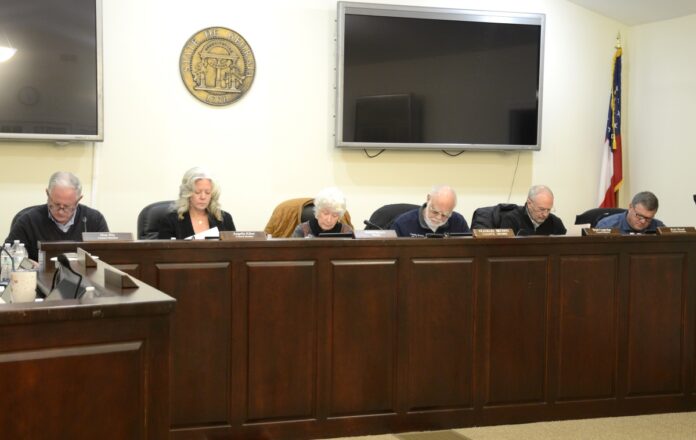
Clarkesville held a second public hearing over House Bill 581 Monday, Feb. 10.
No Clarkesville residents spoke for or against the measure, which was approved by referendum by a majority of Habersham County voters last November.
The next hearing is scheduled for 12 p.m. Wednesday, Feb. 19, at Clarkesville City Hall.
The bill, a statewide floating homestead exemption that caps the annual increases in property values, would exempt property valuations to the inflationary rate as determined by the Georgia Department of Revenue. Statewide, assessments have skyrocketed in conjunction with rising home values for the last five years.
At a previous hearing Monday, Feb. 3, Clarkesville City Manager Keith Dickerson indicated intentions for the city to opt-in, given Habersham’s six other cities and the county do the same.
Dickerson explained that, under the bill, homestead-exempt properties will only rise to match the Consumer Price Index – which he said “runs between 1.5%-3% yearly.”
The exemption, as Dickerson noted, would not apply to commercial or industrial property.
If HB 581 moves forward, a Floating Local Option Sales Tax could come next, if approved by voters by referendum.
FLOST
With more than 220 businesses and over $200 million being spent in Clarkesville annually, Dickerson added that an additional one penny tax paid mostly by visitors who live outside Habersham County could go a long way for city revenue – as well as relieving the tax burden from homeowners.
Under FLOST, according to Dickerson, Clarkesville has the potential to bring the millage (tax) rate down from 5.428 to 3.674.
A mill is equal to $1 per $1,000 in taxable property value. In Clarkesville, property is currently taxed at 100% of its value – though council is considering bringing that assessment value to 40% to align with surrounding cities.
So far, the only government entity in the county to opt-out of the bill is the Habersham School System – though this doesn’t prevent the measure from moving forward.







